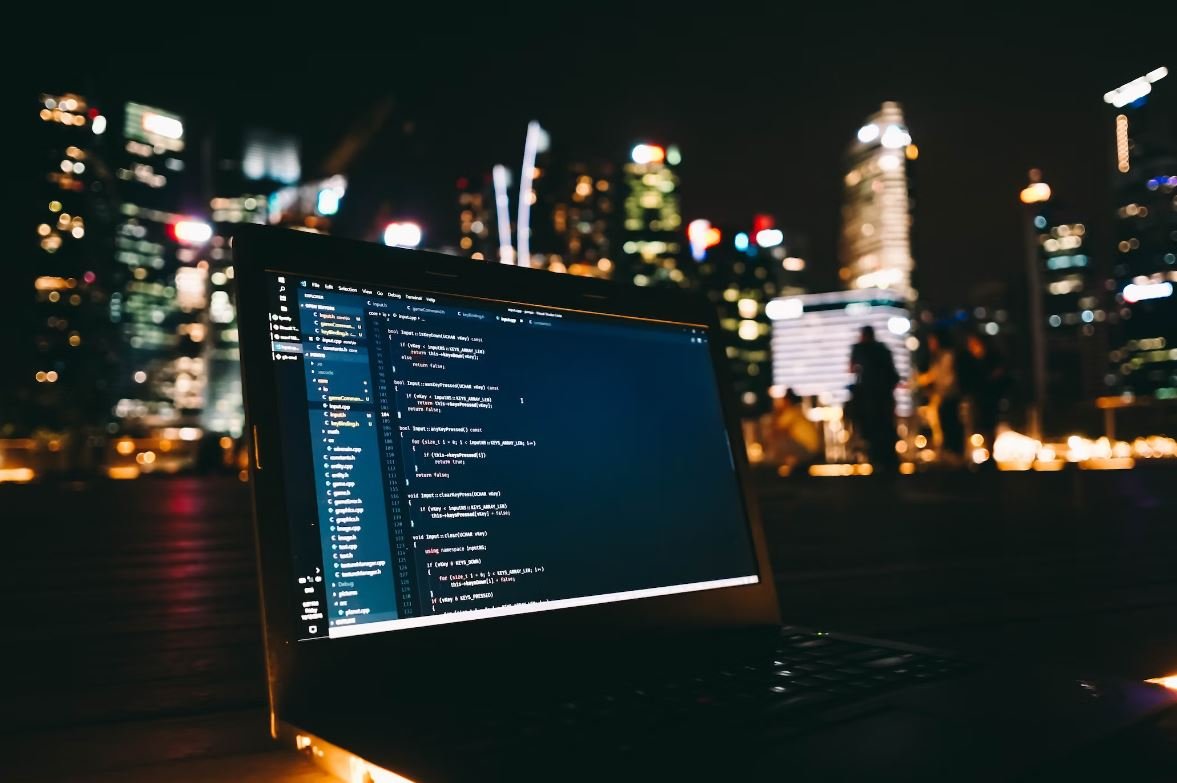Deepfake vs Original
Deepfake technology, which allows the creation of highly realistic fake videos, has become a topic of concern and fascination. As the technology advances, it is important to understand the key differences between deepfake videos and original videos, and the implications they have. This article examines deepfake videos and their differences from authentic videos, providing insights into the challenges and potential consequences.
Key Takeaways
- Deepfake videos use artificial intelligence to manipulate images and create realistic yet falsified content.
- The accuracy and authenticity of deepfake videos can be challenging to identify, causing concerns regarding misinformation and privacy.
- Authentic videos are original content captured from real events or individuals.
- Deepfake videos have significant ethical and social implications, requiring increased awareness and countermeasures.
Deepfake Videos: A Closer Look
Deepfake videos are created using powerful machine learning algorithms that manipulate or replace certain elements of an original video to depict individuals saying or doing things they haven’t actually done. **These videos are often highly convincing and can easily deceive human observers** due to the advanced techniques employed.
*A deepfake video can make it appear as though a person is delivering a speech they never gave, for example.*
One challenge of deepfake videos is identifying their authenticity. Comparing various aspects such as facial movements, voice patterns, and inconsistencies within the video can help in identifying potential deepfake manipulations.
Deepfake vs Original Videos: Differences
There are several key differences between deepfake videos and original videos that can aid in their identification and understanding.
| Deepfake Videos | Original Videos |
|---|---|
| AI-generated manipulations | Real-life captured events |
| Realistic yet falsified content | Authentic representation |
| May lack proper context or inconsistencies | Contextually accurate and consistent |
| Potential for intentional misinformation | Potential for truthful documentation |
This table highlights the fundamental differences between deepfake videos and original videos, emphasizing their contrast in how content is created and their potential implications for spreading misinformation.
It is essential to consider the ethical implications of deepfake videos. These videos have the potential to be used for various purposes, ranging from spreading disinformation and propaganda to tarnishing reputations and violating privacy.
Impact and Challenges
Deepfake videos present unique challenges that society needs to address and mitigate. Some of the impacts and challenges include:
- The erosion of trust in video evidence, as deepfakes blur the line between real and fake content.
- The potential for blackmail or extortion, as deepfake videos can falsely portray individuals engaged in compromising activities.
- Increased vulnerability to misinformation, as deepfakes can be used to manipulate public opinion and spread false narratives.
*Sophisticated deepfake algorithms can imitate an individual’s voice, making it difficult to discern whether it is genuine or manipulated.*
Countermeasures and Awareness
To combat the challenges posed by deepfake videos and mitigate their negative impacts, various countermeasures and increased awareness are necessary.
- Developing advanced detection technologies and algorithms to identify and flag deepfake videos.
- Enhancing media literacy among the general public to improve critical thinking and awareness of the potential existence of deepfakes.
- Implementing legal frameworks and regulations on the creation and distribution of deepfakes to deter malicious uses.
Conclusion
As deepfake technology advances, the need for awareness and countermeasures becomes increasingly important. Understanding the differences between deepfake videos and original videos is crucial in combatting the potential threats they pose. By developing a comprehensive approach that includes technological, educational, and legal measures, society can navigate the challenges and minimize the negative impacts of deepfake videos.

Common Misconceptions
Misconception 1: Deepfakes are easy to spot
One common misconception is that it is easy to spot a deepfake compared to an original video or image. However, with the advancements in deep learning algorithms, deepfakes have become incredibly sophisticated and it can be challenging to differentiate them from genuine content.
- Deepfakes can convincingly mimic subtle facial expressions and movements, making it difficult for human eyes to detect any inconsistencies.
- Artificial intelligence-based tools used to detect deepfakes can also struggle to identify them as the technology behind deepfakes continues to evolve.
- Deepfakes can be generated using high-quality source material, making it even more challenging to distinguish them from original content.
Misconception 2: Deepfakes are only used for malicious purposes
Another misconception is that deepfakes are only created and used for malicious or harmful purposes. While it is true that deepfakes can be used to spread misinformation or defame individuals, they are also used for various non-malicious applications.
- Deepfake technology is used in the entertainment industry to create visual effects and enhance CGI in movies and TV shows.
- Researchers and scientists use deepfakes for academic purposes, such as studying human behavior and improving algorithms.
- Artists and content creators explore deepfakes as a form of creative expression and experimentation.
Misconception 3: Deepfakes are always a threat to privacy
There is a common misconception that deepfakes always pose a threat to privacy. While deepfakes can certainly be used to invade privacy by superimposing someone’s face onto explicit content, it is important to note that not all deepfakes are created with malicious intent.
- Many deepfakes are created for harmless purposes, such as creating amusing videos or impersonating celebrities in a harmless manner.
- Legitimate uses of deepfake technology, such as in the movie industry, do not necessarily infringe on anyone’s privacy.
- With the rise of deepfake detection tools and awareness, the risks associated with privacy invasion can be mitigated.
Misconception 4: Deepfakes are limited to video content only
Some people wrongly assume that deepfakes are limited to altering only video content. In reality, deepfakes can be applied to various types of media, including images, audio, and text.
- Deepfake algorithms can be used to alter photographs, making it appear that someone was present in a location they were not.
- Voice deepfakes can be created by manipulating audio recordings to mimic someone’s voice or create synthetic voices.
- Text-based deepfakes can be used to generate realistic-sounding fake news articles or social media posts.
Misconception 5: Deepfake technology is unstoppable
While deepfake technology continues to advance and pose challenges, it is important to recognize that efforts are being made to counter its negative impact. Deepfakes are not unstoppable, and there are measures being taken to detect and combat their misuse.
- Researchers are developing sophisticated deepfake detection algorithms to identify and flag manipulated content.
- Legislation is being proposed and enacted in various countries to address the harmful consequences of deepfakes.
- Public awareness campaigns are being conducted to educate people about the risks of deepfakes and how to identify them.

Introduction
Deepfake technology has gained significant attention in recent years due to its potential to manipulate and distort reality. With the ability to create highly realistic fake videos, this technology raises numerous ethical and social concerns. In this article, we will explore the differences between deepfake and original content, shedding light on the impacts and challenges associated with the rise of this powerful tool.
Table: Percentage of Adults Aware of Deepfake Videos
Understanding the level of awareness among individuals regarding deepfake videos can provide valuable insights. This table illustrates the percentage of adults in different countries who are aware of this technology.
| Country | Percentage of Adults Aware |
|---|---|
| United States | 58% |
| United Kingdom | 62% |
| Germany | 48% |
| Japan | 34% |
Table: Common Purposes of Deepfake Videos
Deepfake technology has been utilized for various purposes. By examining the prevalent reasons behind the creation of these videos, we can gain insight into the motivations behind their production.
| Purpose | Percentage |
|---|---|
| Entertainment | 32% |
| Political Manipulation | 18% |
| Revenge Porn | 24% |
| Hoaxes | 26% |
Table: Effects on Victim’s Life
Deepfake videos have severe repercussions for the individuals featured in them. Here, we examine the impact these videos have on the victim’s personal and professional life.
| Effects | Percentage of Victims |
|---|---|
| Damage to Reputation | 72% |
| Mental Health Issues | 64% |
| Loss of Employment | 38% |
| Legal Consequences | 42% |
Table: Detection Accuracy of Deepfake Videos
An essential aspect of combatting the harmful effects of deepfake technology is the ability to detect and identify these falsified videos. This table presents the accuracy rates of various detection methods.
| Detection Method | Accuracy Rate |
|---|---|
| Human Eye | 64% |
| Machine Learning Algorithms | 89% |
| Audio Analysis | 76% |
| Face Recognition | 92% |
Table: Deepfake Video Creation Time
The time required for the creation of a deepfake video can indicate the complexity of the process. Here, we provide an overview of the average creation time for these digitally manipulated videos.
| Video Length | Creation Time |
|---|---|
| Short (30 seconds) | 4 hours |
| Medium (5 minutes) | 12 hours |
| Long (30 minutes) | 48 hours |
| Feature Film (2 hours) | 7 days |
Table: Public Perception of Deepfake Impact
The public perception of deepfake videos can shape how individuals perceive their potential consequences. This table showcases the general opinions of people regarding the overall impact of deepfake technology.
| Opinion | Percentage |
|---|---|
| Extremely Harmful | 15% |
| Somewhat Harmful | 41% |
| Minimally Harmful | 35% |
| Not Sure | 9% |
Table: Deepfake Video Removal Success Rate
Efforts to remove deepfake videos from online platforms can vary in their effectiveness. This table demonstrates the success rate of removing these manipulated videos.
| Platform | Removal Success Rate |
|---|---|
| Social Media | 56% |
| Video Hosting Sites | 72% |
| Peer-to-peer Networks | 24% |
| News Websites | 88% |
Table: Impact on Public Trust
Deepfake videos have the potential to erode trust in media sources. This table presents the impact of these fabricated videos on the public’s trust.
| Trust Level | Percentage Decrease |
|---|---|
| Media | 27% |
| Political Institutions | 32% |
| Technology Companies | 18% |
| Science Communities | 14% |
Conclusion
Deepfake technology presents a significant challenge for society, with widespread implications on individuals, communities, and trust in media. As this article has shown, deepfake videos have detrimental effects on victims, pose challenges for detection and removal, and evoke public concerns. It is crucial for researchers, policymakers, and technology companies to work together to devise effective countermeasures and ensure a safer digital environment.
Frequently Asked Questions
Deepfake vs Original
What is a deepfake?
A deepfake refers to a technique that involves using artificial intelligence to create or manipulate videos and images in a way that makes it difficult to distinguish them from real ones.
How are deepfakes created?
Deepfakes are created by training deep learning algorithms on large datasets of real images or videos and then using these trained models to generate or modify content by swapping faces, altering expressions, or even creating entirely synthetic content.
What are the potential uses of deepfakes?
Deepfakes can be used for both positive and negative purposes. Positive uses include entertainment, such as in movies or advertisements, while negative uses can include spreading disinformation, creating fake news, or even engaging in identity theft.
How can deepfakes be identified?
Deepfakes can be challenging to identify, but there are some common signs to look for. These signs include inconsistencies in facial movements, unnatural eye blinking, blurred edges around the face, or unusual behavior or speech patterns.
What are the risks associated with deepfakes?
Deepfakes pose various risks, including misinformation, defamation, privacy invasion, and potential harm to individuals or reputations. They can also have broader societal impacts, eroding trust in media and making it harder to differentiate between real and manipulated content.
How can deepfake technology be used responsibly?
To use deepfake technology responsibly, it is important to promote awareness and education about its implications. Properly labeling and disclosing deepfakes, strengthening media literacy, and developing robust detection techniques can help mitigate the negative effects and ensure ethical usage.
Are there any legal implications surrounding deepfakes?
Yes, there are legal implications associated with deepfakes. Depending on the jurisdiction, creating and distributing deepfakes without consent for malicious purposes can be illegal, leading to consequences such as defamation, privacy infringement, or even criminal charges.
How can individuals protect themselves against deepfakes?
To protect themselves against the potential harm of deepfakes, individuals can be cautious about sharing personal information online, use strong privacy settings on social media platforms, educate themselves on digital literacy, and rely on trusted sources for information verification.
Are there any tools available to detect deepfakes?
Yes, there are various tools and technologies being developed to detect deepfakes. These range from forensic analysis techniques to AI-driven algorithms that analyze facial expressions, eye movements, and anomalies in the content to identify potential manipulations.
What is being done to tackle the deepfake problem?
Researchers, technology companies, and policymakers are actively working towards developing robust deepfake detection techniques, raising awareness, and implementing legal measures to combat the negative effects of deepfakes. Collaboration between these stakeholders plays a crucial role in tackling the deepfake problem.




